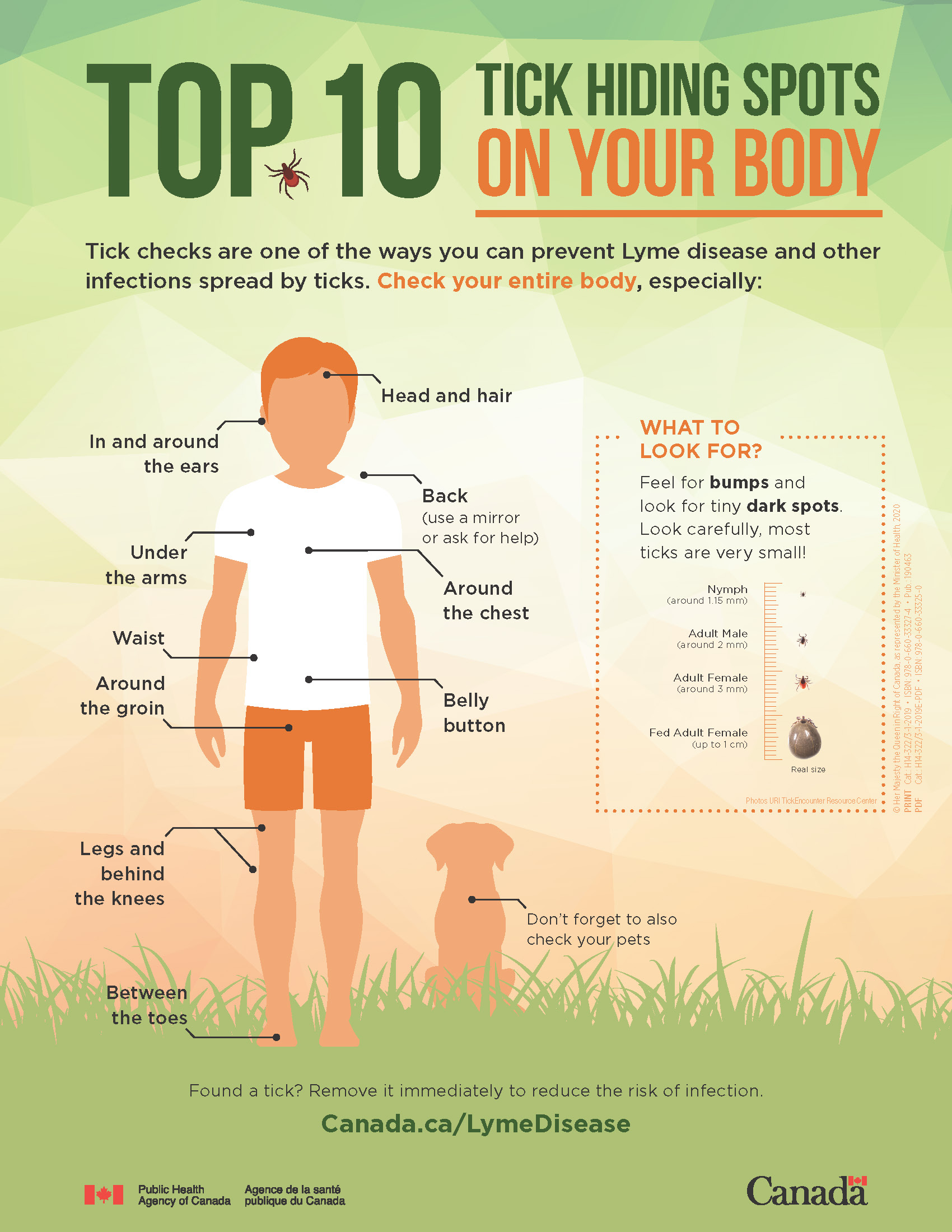Lyme disease on the rise in Quebec: Laval now an endemic area
Lyme-carrying ticks is speading in Quebec. Since 2022, the city of Laval has been considered a significant risk area (endemic zone) for Lyme disease.
If you develop redness after being exposed to ticks in one of these areas, call Info-Santé 811 or consult your pharmacist.
Transmission
Lyme disease is caused by a bacteria. In Quebec, it spreads to humans mainly through bites from blacklegged ticks.
Measuring 1 to 3 millimetres (the size of a poppy seed) before feeding and often hard to see in the nymph stage, ticks are mostly found in:
- Woodlands and forests
- Tall grasses
- Shrubs, brush and unmaintained properties
- Garden and landscaping features
- Piles of dead leaves
Outdoor staff who in tick-friendly environments (e.g. farm workers, landscapers, camp counsellors, etc.) are at greater risk of being infected. Get more information Get more information |
Ticks don't jump: they actually crawl and cling onto people or animals that move near them. Infected ticks can spread the disease if they aren’t removed quickly.
Easy ways to protect yourself
You of course want to make the most of the great summer weather!
However, when enjoying any outdoor activity that poses a risk of tick bites, you can protect yourself by:
- Wearing long, light-coloured clothing over your entire body (this makes it easier to spot ticks that may be clinging to you).
- Wearing closed-toe shoes during high-risk activities and pulling your socks up over your pant legs.
- Applying a mosquito repellent containing DEET or icaridin (for more information, consult the
 Health Advice and Prevention section of the Government of Quebec website).
Health Advice and Prevention section of the Government of Quebec website). - Staying on open paths in woods and forests and being careful not to brush up against the vegetation.
- Checking for ticks when you get home while taking a shower.
Check your body for ticks after any outdoor activity
Click to enlarge image
If you’ve been bitten by a tick
- Remove the tick as soon as possible. To learn how, see the following links:
 Removing a tick after a bite
Removing a tick after a bite- Video:
 How to properly remove a tick
How to properly remove a tick - If you develop
 symptoms of Lyme disease within 3 to 30 days of the bite,
symptoms of Lyme disease within 3 to 30 days of the bite,  see your doctor or go to a walk-in clinic.
see your doctor or go to a walk-in clinic.
- Call Info-Santé at 811 to find out if you are eligible for preventive treatment. You can also consult your pharmacist, who can prescribe a preventive treatment if required. Place the tick in a container. Label the container.
- If you develop
 symptoms of Lyme disease within 3 to 30 days of the bite,
symptoms of Lyme disease within 3 to 30 days of the bite,  see your doctor or go to a walk-in clinic.
see your doctor or go to a walk-in clinic.
Learn more- Government of Quebec website
 Lyme Disease - Health Canada.
Lyme Disease - Health Canada.  Lyme Disease - Government of Quebec.
Lyme Disease - Government of Quebec.- Videos from the Public Agency of Health of Canada:
 Workplace awareness and prevention tools - Institut national de santé publique du Québec.
Workplace awareness and prevention tools - Institut national de santé publique du Québec.

